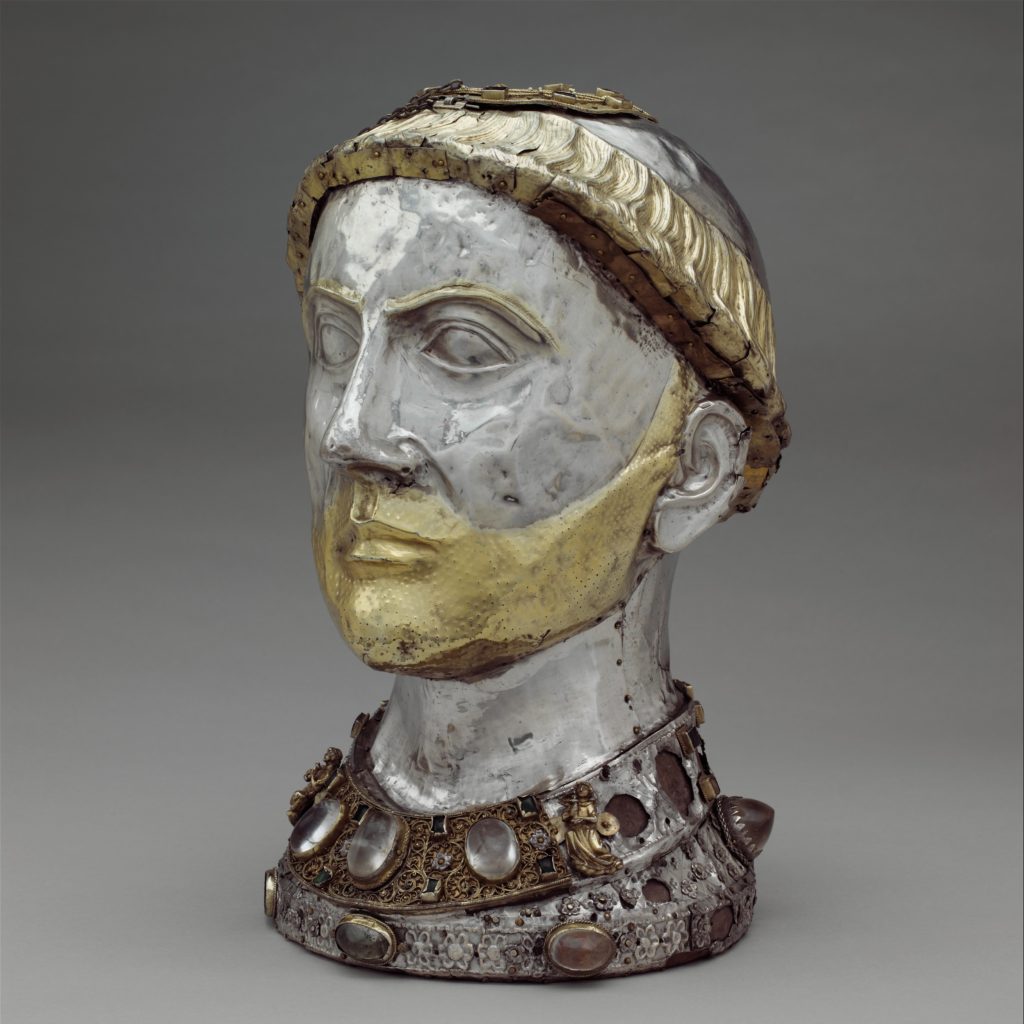Art World
Tiny French Town Demands the Restitution of a Religious Reliquary From the Met
The artifact has been in the Met’s collection for over a century.

The artifact has been in the Met’s collection for over a century.

Naomi Rea

A commune in the Nouvelle-Aquitaine region of France is asking for the restitution of an 11th-century reliquary bust that has been in the collection of the Metropolitan Museum of Art in New York since 1917.
Last Wednesday, January 10, Daniel Boisserie, mayor of the small town of Saint-Yrieix-La-Perche in west-central France, sent a letter to the Met via the Ministry of Europe and Foreign Affairs, and the French Embassy in the United States, officially asking for the return of the artifact: A gold and silver, jewel-encrusted bust of Saint Yrieix, which once contained the skull bones of the saint. The Met has not yet responded to our request for comment on the matter, but a town spokesperson told artnet News that the museum has yet to receive an answer from the Met’s management.
Saint Yrieix, also known as Saint Aredius, founded a monastery in the region during the sixth century, and gave the town, which today counts 7,000 inhabitants, its name. The French newspaper La Montagne reports that according to a recent book by local historians Philippe Grandcoing and Vincent Brousse, titled La belle époque des pilleurs d’églises (The Beautiful Era of Church Looters), the original bust is thought to have left Saint-Yrieix in 1906, sold and replaced with a copy by the parish priest at the time.
From then, the genuine bust is thought to have passed through the hands of a French antiques dealer to an English one, who sold it for 300,000 gold Francs to banking magnate JP Morgan in 1907. Morgan’s heirs donated it to the Met ten years later, and it has been part of the museum’s permanent collection ever since.
It was only in the 1950s, when a townsperson visiting the Met recognized the reliquary, that the town actually realized its existing bust was a copy. The town maintains that it is the only legitimate owner of the relic, citing a 1789 decree that made it public property, and an 1891 protection of historic monuments. Further, a 1905 law dictates that it is forbidden for a buyer of a protected object to transport it outside of France.
“The sale and exportation outside of France of the reliquary of Saint Yrieix were carried out unlawfully around May 1906,” says Judith Kagan, head of France’s office of the preservation of movable and instrumental heritage. “Kept since 1917 at the Metropolitan Museum of New York, the legitimate owner remains the commune of Saint-Yrieix, which owns a national treasure under article L 111-1 of the heritage code, and a public good of cultural interest under article L 2112-1 of the general code of the public persons’ property. As such it is inalienable and imprescriptible.”
The town hopes for an amicable agreement with the museum, but if all else fails, a spokesperson for the commune warned French magazine L’Express that “the city, which is within its rights, may bring a civil action.”